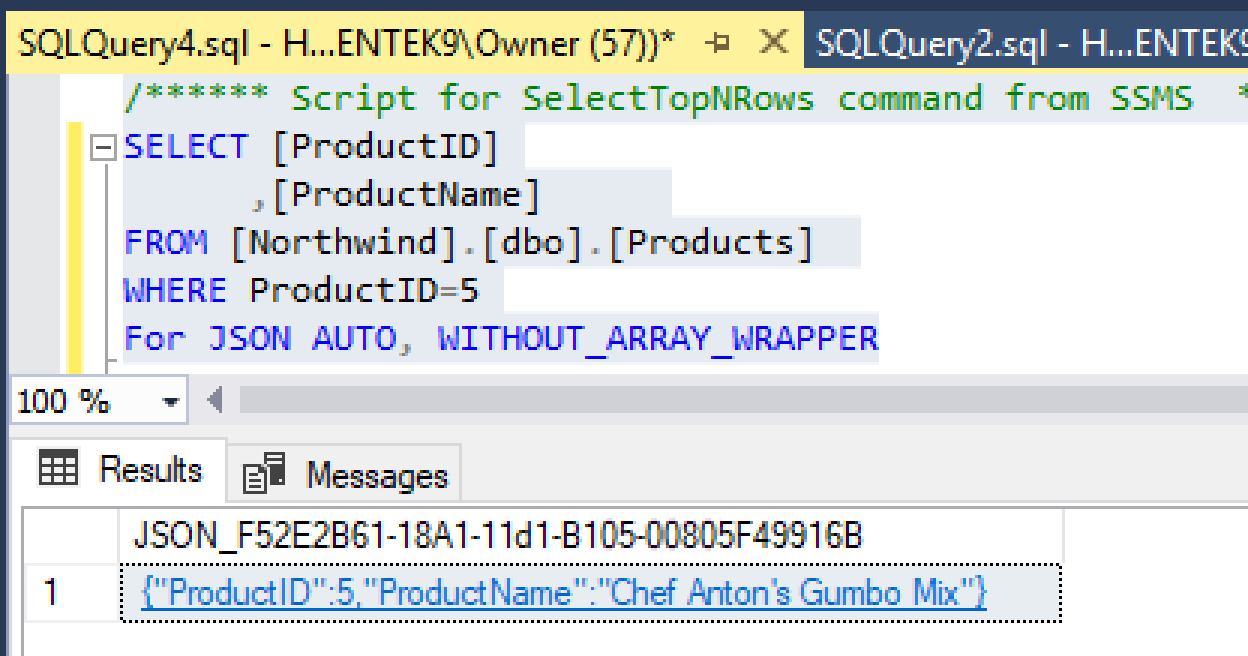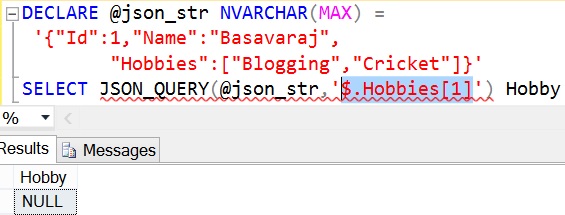
Here, we use jq's notation to access Senator Ernst's terms as an attribute: take care to notice the square brackets which denote the array that is contained in terms: cat ernst.json | jq '.

Jeremiah,"Springfield, Jr.",Jebediah,1942,2003,M,Kalamazoo,Michigan

Lucy Jo Mary,Carrie-Paulson,1967,F,Omaha,Nebraska JSON is more verbose, but easier to read than CSV.ĬSV: firstname,lastname,middlename,birthyear,deathyear,gender,city,stateĪlexander,Smith,Johnson,1918,1955,M,Madison,Wisconsin
Json query tutorial install#
To install jq: # download directly into ~/bin_compcivĬheck out the tutorial on jq here. If you've haven't installed the pup HTML parsing tool, or any other tool which required you to edit your ~/.bashrc's' PATH and create the ~/bin_compciv directory, then follow the instructions here: Installing programs for your personal Stanford account. You can use it to slice and filter and map and transform structured data with the same ease that sed, awk, grep and friends let you play with text. Jq is a program described as " sed for JSON data": JSON stands for JavaScript Object Notation and is nearly ubiquitous as a data format, for its lightweight nature and (relatively) ease of human-readability.
Json query tutorial how to#
Most of the popular API and data services use the JSON data format, so we'll learn how it's used to serialize interesting information, and how to use the jq to parse it at the command-line. jq is a command-line tool for parsing JSON. You'll then need to use an Expand operation to combine the lines together.JSON is a lightweight format that is nearly ubiquitous for data-exchange.
Json query tutorial code#
If you're trying to load a JSON Lines file, the following sample M code converts all JSON Lines input to a single flattened table automatically: let Or you might be trying to load a JSON Lines file. If you see the following message, it might be because the file is invalid, for example, it's not really a JSON file, or is malformed. Previously, users had to flatten records and lists manually. The first argument to jsonquery is a SQL expression that returns an instance of a. You can thus use jsonquery to retrieve fragments of a JSON document. With the addition of automatic table detection capabilities, using the JSON connector in Power Query will automatically apply transformation steps to flatten the JSON data into a table. SQL/JSON function jsonquery selects one or more values from JSON data and returns a string ( VARCHAR2, CLOB, or BLOB instance) that represents the JSON values. Here is an example of JSON file with multiple levels of nested data. Importing data from JSON files (or Web APIs) can be challenging for end users. Automatic table detection from JSON files To load a JSON file from the web, select the Web connector, enter the web address of the file, and follow any credential prompts. More information: Automatic table detection from JSON files From the editor, you can then continue to transform the data if you want, or you can just save and close to load the data. Power Query uses automatic table detection to seamlessly flatten the JSON data into a table. Loading the JSON file will automatically launch the Power Query Editor. If authentication is required, enter your credentials. Select an on-premises data gateway from Data gateway. Load a local JSON file from Power Query Online From the editor, you can then continue to transform the data if you want, or you can just close and apply. However JSON objects have several advantages over XML and we are going to discuss them in this tutorial along with JSON concepts and its usages. JSON objects are used for transferring data between server and client, XML serves the same purpose. Power Query uses automatic table detection to seamlessly flatten the JSON data into a table. JSON stands for JavaScript Object Notation. This selection launches a local file browser where you can select your JSON file. Select the JSON option in the Get Data selection. Load a local JSON file from Power Query Desktop Some capabilities may be present in one product but not others due to deployment schedules and host-specific capabilities.


 0 kommentar(er)
0 kommentar(er)
